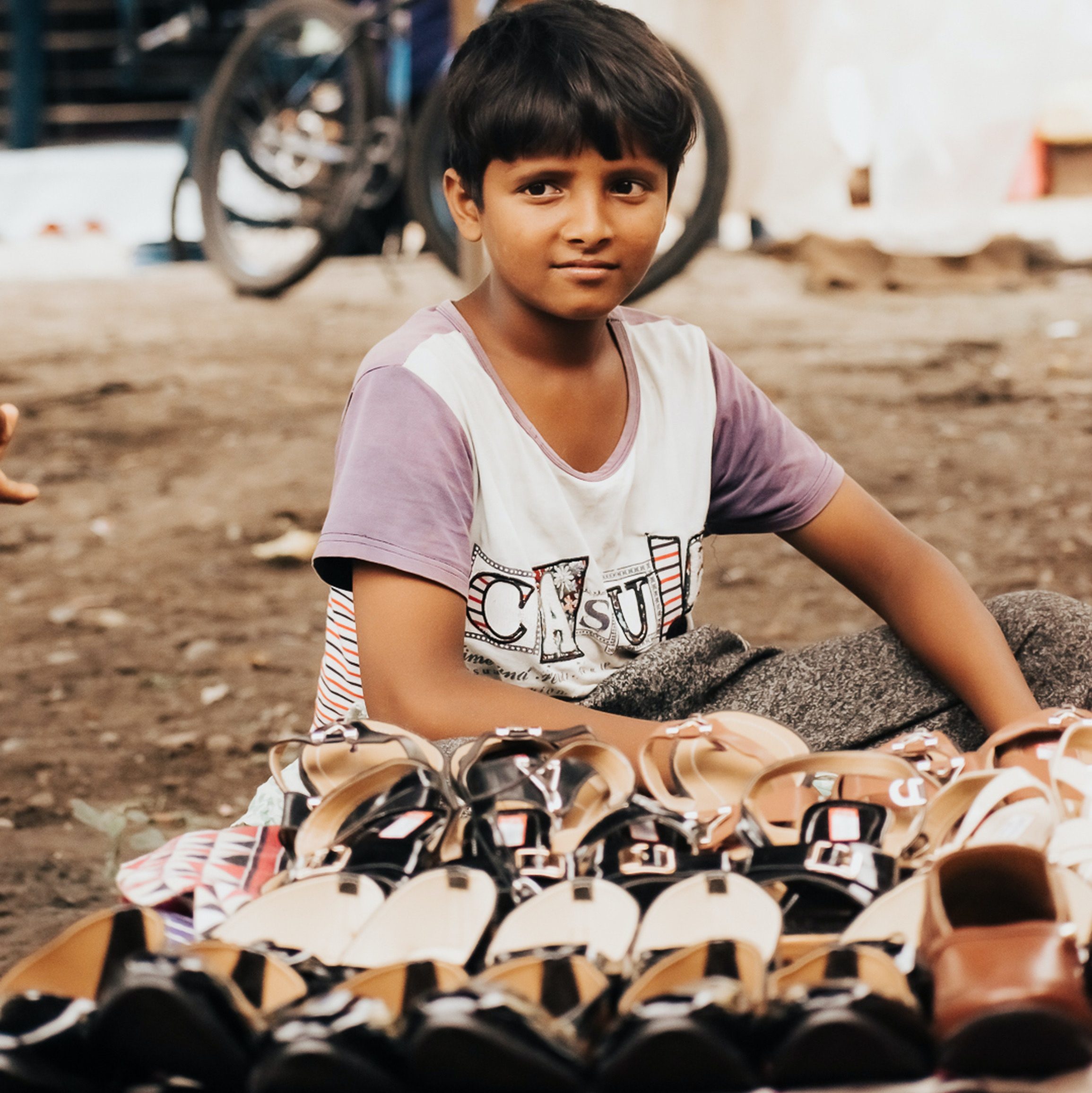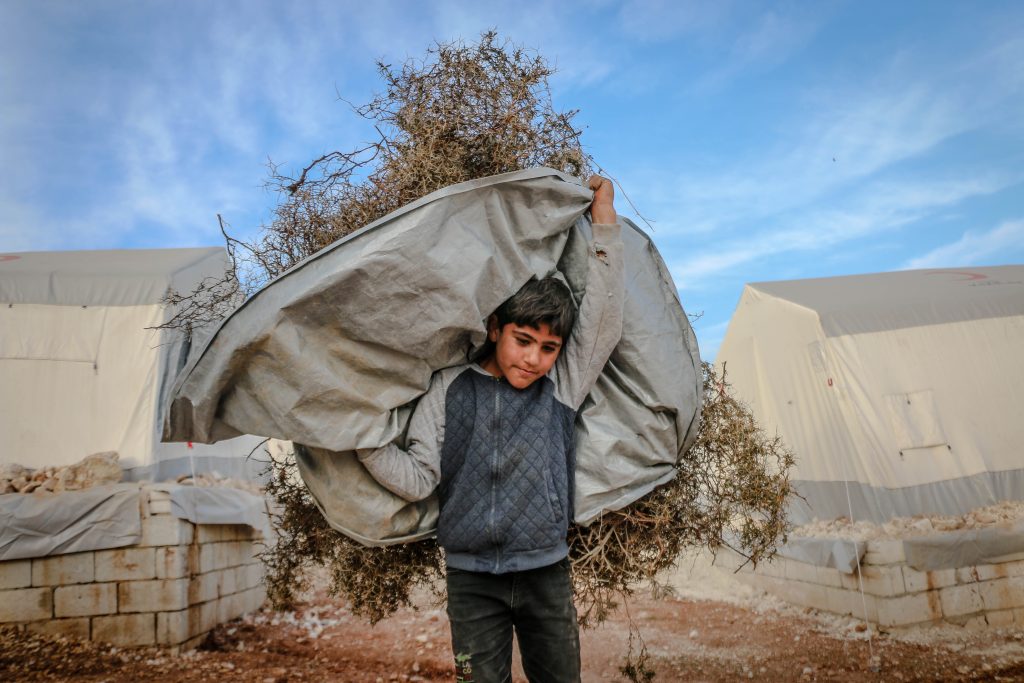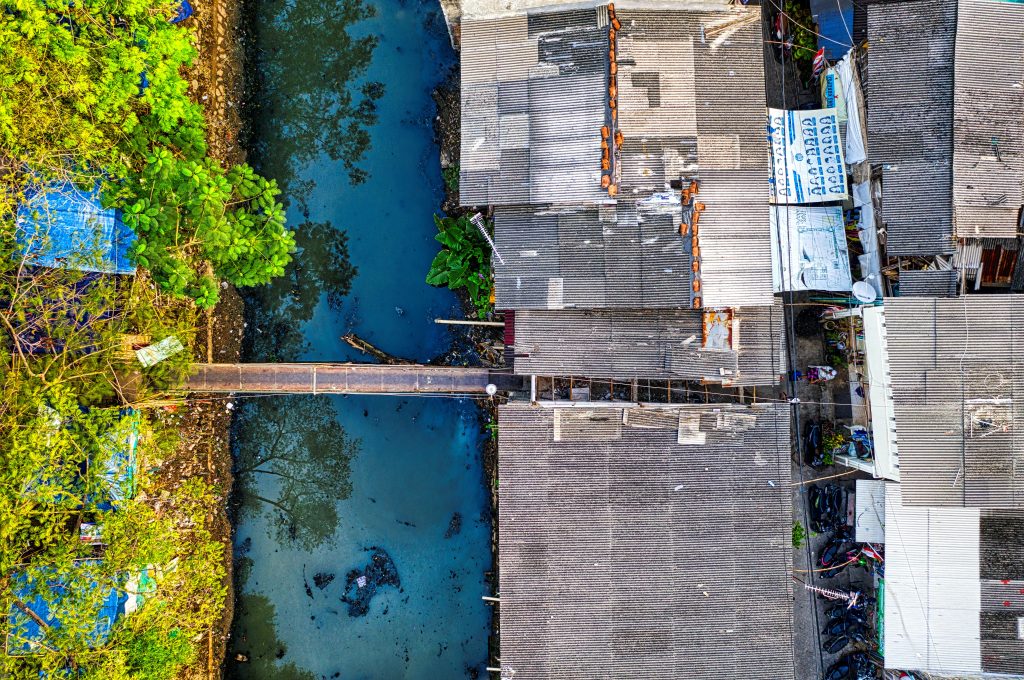It is well known that COVID-19 has fuelled global poverty. Lockdown measures have caused massive job losses, devastated economies, fewer investments and exports, and a decline in tourism. Developing countries are often more vulnerable to the extreme economic and social consequences of COVID-19. Many of these countries already struggle with persistent social and economic inequalities, food insecurity and ineffective governance. If they experience increased poverty, this can lead to a rise in child labour.
What is child labour?
The International Labour Organization (ILO) has defined child labour as “work that deprives children of their childhood, their potential and their dignity, and that is harmful to their physical and mental development”. Such work can prevent children from attending school and can motivate them to leave school early. Furthermore, these children often feel pressured to combine school with excessively long and heavy work.

Forms of Child Labour
Poverty and family dysfunction are some of the most significant drivers of child labour. According to the ILO, the worst forms of child labour include:
- Slavery: A person being made to work for another person against their will.
- Child trafficking: The illegal trading of children for labour and sexual exploitation.
- Debt bondage: Forced labour to pay off loans that cannot be paid off with money or other physical goods.
- Serfdom: Working on the land of another person against one’s will with little to no pay.
- Forced labour: A person working against their will.
- Sexual exploitation of children: Forcing children into prostitution, pornography, and pornographic performances.
- Illicit activities: Involvement of children in the production and trafficking of drugs, crimes (e.g. theft, shoplifting, burglary) and organized beggary.
- Any work that harms the health, safety or morals of children.
However, not all work is harmful. Those above the minimum employable age can enter safe work, provided it doesn’t harm their health, schooling or development. Helping with a family business or earning pocket money can give children the skills and experiences they need to live fruitful lives as adults.

The above graph shows a global decline in child labour from 2000 to 2016. However, since 2016, this progress has stalled. Rising global poverty during the COVID-19 pandemic further threatens to increase child labour in the years ahead.
Factors of poverty
Some of the biggest factors that lead to poverty are:
- Inadequate access to clean water and nutritious food
- Lack of access to jobs or livelihoods
- Conflict/War
- Inequality
- Poor education
- Climate change
Poverty leads to child labour
The pandemic has reversed decades of progress in the reduction of extreme poverty. Businesses had to close or reduce their opening hours owing to lockdowns. As a result, wages have fallen and unemployment rates have surged. Women and low-wage workers have been disproportionately affected as they are often more likely to hold informal jobs.
Many children in developing nations have dropped out of school as they cannot access online education. As every extra year of education increases average earnings, a loss of one school year can lead to a $10 trillion loss of global GDP. As incomes have fallen during the pandemic, nutritious food has also become more unaffordable. On top of this, food distribution has largely stalled due to trading restrictions. Factors such as conflict, climate change and ineffective governance also worsen poverty for many.
Thus, it can be deduced that child labour increased during the pandemic- estimates show that a 1% rise in poverty can cause at least a 0.7% increase in child labour. Parental unemployment, unaffordable school fees and lack of learning opportunities often encourage children to drop out of school and go to work. Furthermore, school staff often protect people from child labour as they can detect people who are struggling or at risk. Hence, school closures prevent teachers and social workers from helping exploited children. A desire for cheap labour often encourages employers to illegally hire children for hazardous work.
Child labour in India
India is a country with a very high prevalence of child labour. Around 10 million children in the nation are seeking or engaged in work.
India has undergone rapid economic development. Despite this, more than a third of Indians still live below the poverty line. This is because there are very few stable jobs for individuals in poverty-stricken areas.
Parents with little to no education are often not able to send their children to school. Instead, many children are sold to child traffickers or are abandoned in the countryside. Traffickers regularly exploit these children, providing little to no wages for forced labour. Other school-related factors that perpetuate child labour include low awareness about the issue in schools, lack of transport to schools, and in some cases, discrimination in education facilities.

Children work in dangerous conditions
Many Indian children find themselves forced to engage in hazardous work, with the majority of children aged 5-14 years of age working in agriculture (56.4%) as of 2019.
Many who work in these roles suffer from horrendous conditions. For instance, child miners are often forced to work in poorly ventilated and badly lit workspaces, with prolonged exposure to toxic chemicals. Children in construction jobs regularly carry heavy loads, work without safety equipment and use dangerous machinery. In domestic labour, children often suffer physical, emotional and sexual abuse while being isolated from friends and family. Many who work at street stalls and markets often risk injury and death on busy roads without safety measures (or even footpaths). Most importantly, these children often suffer from health issues such as vitamin deficiencies, skin diseases and infections.
It is important to look closely at child labour in the country during the COVID-19 pandemic. This is because COVID-19 has largely worsened factors that contribute to child labour. Hence, the pandemic has increased the number of abused children in the nation.
Child labour during the pandemic
COVID-19 drags children into labour.
90% of adults in India work in the informal sector in industries such as construction, manufacturing and agriculture. The National Survey of Informal Workers found that nearly four-fifths (78%) of informal workers lost their livelihoods during India’s lockdown. Of these, estimates show that 400 million of these workers are unlikely to rebuild their livelihoods for a long time. Without savings or government support, many have no choice but to send their children into the workforce to survive.
Nationwide school closures during the lockdown added to the surge in child labour across the nation. While the national government has recommended online teaching, most schools cannot offer this, especially in rural areas. Without good internet connections, children are more likely to drop out of school. Hence, they are more likely to work.
Lockdown
To make up for months of financial losses during the lockdown, industries have shown a preference for child workers over adult workers. This is because hiring children is often cheaper than adults. Additionally, children tend to have little bargaining power compared to them.
India has legislation to protect children from forced labour, with the Child and Adolescent Labour (Prohibition and Regulation) Act banning children under 14 from working, and bocking those under 18 from hazardous work. However, in practice, these often stay unenforced owing to a series of issues.
Some of the biggest issues include a lack of enforcement officers and resources, bribery and corruption allowing employers and traffickers to get away with breaking these rules, and authorities often punishing the children themselves for crimes they force them to commit.
Poverty can not only lead to rising child labour (and prevent kids from learning) but can also lead to them remaining in poverty as adults. Thus, the cycle of intergenerational poverty keeps going.

Bridges out of poverty
With this in mind, it is vital to help informal workers gain jobs, and make online education more accessible for children. Furthermore, there must be better legal protections and surveillance measures to combat child labour. Some ways to ease poverty and child labour include:
- Providing support to people in danger of entering poverty. India, for example has the National Rural Employment Guarantee Scheme, which provides 100 days of wage employment per year to rural households. This would also be valuable for those in urban areas.
- Boosting funds for income support, food provisions and renewal of small and medium-sized businesses that provide legitimate work opportunities. This reduces the need to hand children over to traffickers or child employers.
- Giving people subisdised/free internet connections to allow continued online learning.
- Building public-private partnerships between governments, schools, companies and not-for-profits to provide free online learning devices and socially distanced classroom teaching (e.g. outdoor classes) to low-income children
- Helping victims escape their circumstances rather than punishing them.
- Giving more resources to labour inspection and anti-human trafficking teams so they may more easily stop those who hire children.
- Making sure public officials who enable harmful child labour are held accountable and punished accordingly (e.g. imprisonment rather than small fines).
- Allowing government officials and NGO workers to rescue kids during the lockdown in a COVID-safe manner.
Conclusion
You can help rid India of child labour by volunteering with or donating to organisations such as Save the Children and SOS Children’s Villages.
However, it can be hard to see how much of an impact we have.
We at the THRIVE Project have a framework that aims to fix this. It uses scientific data to allow anyone, from governments to individuals, to track their impacts, and know what actions will have the least impact on our precious Earth.
Together, we can make sure everyone has the chance to not just survive, but thrive! If you want to plant the seeds of change, click this link to find out more about our THRIVE platform.























